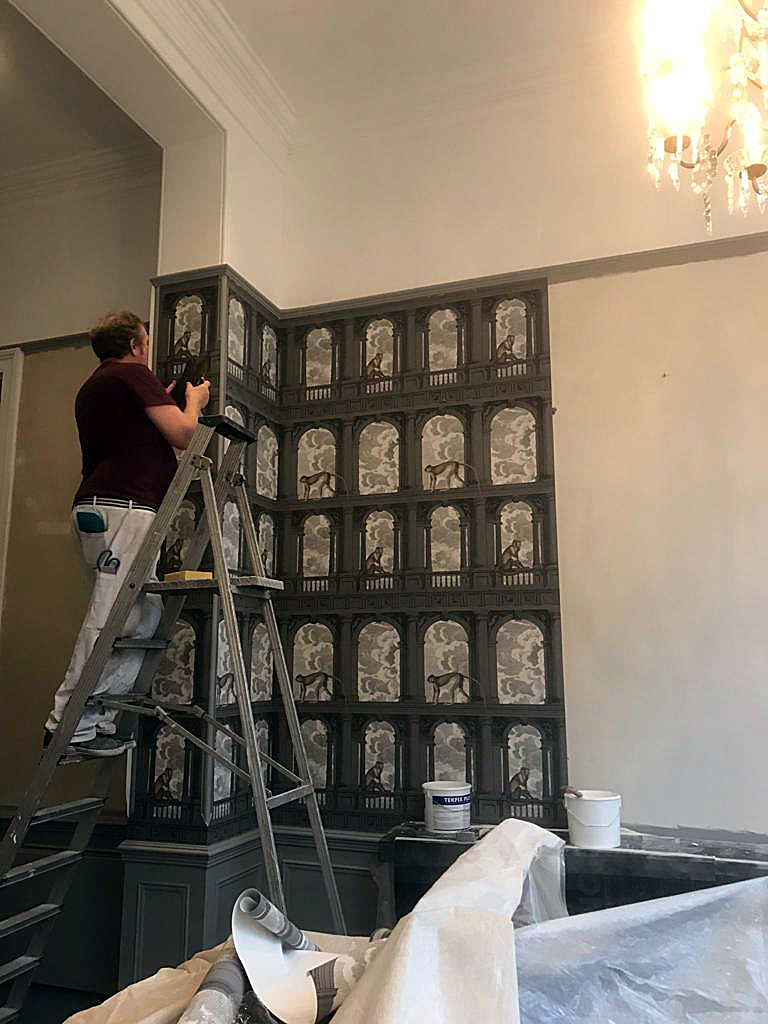Professional Painters

COMMERCIAL PAINTING &
DECORATING IN LONDON
Walls almost always dominate the look of a room, so they are one of the most important aspects of decorating your home.
As we move away from the more showy and ‘decorated’ interiors of the 1980s and into a more organic, evolved and understated look, it is important to find a look that suits you perfectly. If this sounds like a difficult task, bear in mind that it is also immensely liberating. Quite literally, anything goes. If you wish to combine a Mediterranean sense of colour with your favourite primitive oil paintings and a collection of Chinese ceramics, you can. It is simply a question of balance.
But how do you choose a style when the choice of wall-coverings is simply so dazzling in its breadth and variety? Deciding on the final scheme is a source of enormous anguish to most home decorators. How many of us have considered fantastically colourful swatches of paint, paper and fabric for months, only in the end – out of fear, confusion and terror of blow- ing our budget – to plump for magnolia in a cowardly fashion? But choosing a colour scheme does not have to be such an ordeal or fraught with difficulties. Colour is the most wonderful tool; it literally transforms everything it touches. Whether you wish to create a sense of peace in a bedroom, or a sense of drama in a dining room, the colour of the walls will have a profound effect on the finished product. Start thinking of colour as your ally, rather than as a source of anxiety, and you are on your way to a wonderful decorating adventure.
Before you start, gather together lots of samples of wallpaper and paint. If possible, get into the habit of carrying around Polaroids, fabric and colour swatches so that, wherever you are, you can match things up.
If you are keen to use specialist paint techniques, try them out on sheets of lining paper first, in order both to perfect the technique and to get a realistic sense of the colour and effect you are going to achieve. You can also make up the paint, wallpaper, tile and fabric swatches you have collected into colour boards, just as a professional interior decorator would.
Ideally, you should pin these up in the room where you intend to use them and then live with them for as long as you can. You will be amazed to see how that terracotta can look cosy and warm in one room and yet can appear a cheap and nasty orange in another. This exercise also allows you to get a sense of how the different elements work together, and gives you some idea of the effect daylight has on colour. This exercise may initially require time and patience, but it is worth the wait and the effort as it means that you are more likely to avoid expensive mistakes and also — ultimately — to create a scheme you are happy to live with for a long time.
Old houses present particular challenges. Often, the desire to be historically correct can be overwhelming but today the trend is against the slavish imitation of historical styles. Houses should reflect the lives, passions and preoccupations of their owners, rather than recreating an uncomfortable museum or quaint period drama. It is a question of reaching a successful compromise between sensitivity to the quality of your surroundings and your desire for a workable, modern scheme. And remember, the use of colour in old houses was often much more vivid than fading interiors, pictures and samples of fabric now would lead us to believe.
Practically speaking, several factors determine what kind of wall treatment is right for your home: budget; decorative style; your own level of skill and/or willingness to experiment with new techniques; and finally, practicality.
Of all the materials available to you, paint is probably the most versatile. Certainly, it is ideal for the budget decorator. Its versatility and dramatic potential has endeared it to many people working within strict financial constraints.
Wallpaper is available in myriad styles and patterns. Whether you are after floral abundance or formal restraint, there is something for you. For those people who are hesitant about attempting paint techniques such as dragging or sponging, there are wallpapers which imitate these effects quite realistically. Papers can be combined with borders and friezes for additional dramatic effect. And if wallpapering frightens you, because you think it takes a high level of skill, developments in recent years should take away any residue of anxiety. For example, self-adhesive papers can be hung straight from the roll and, more to the point, repositioned instantly if you make a mistake.
There are several other options if you are feeling courageous and would like to try something a little more unusual, or something a little less conventional than paint and paper. Fabric makes a fantastic wallcovering, and wood or metal cladding on interior walls has been through something of a revival in recent years.
The key to success is to spend some time evaluating the options open to you before you start to make any major decisions. You must work out exactly what is going to look right for your space. After that, be bold, be brave, be prepared to experiment – and follow the correct techniques to get it right!
